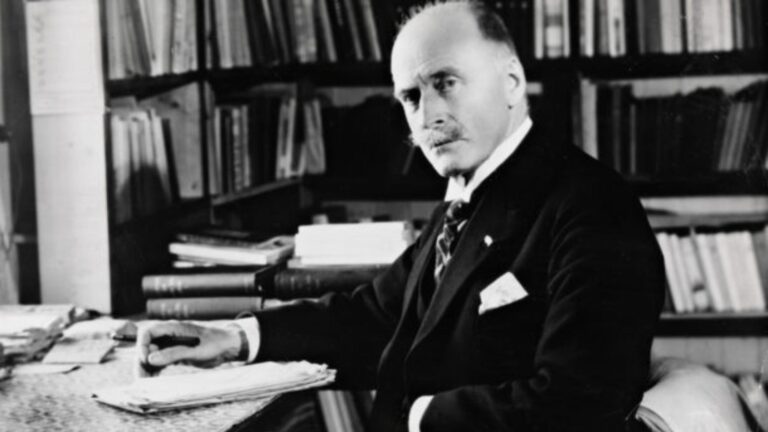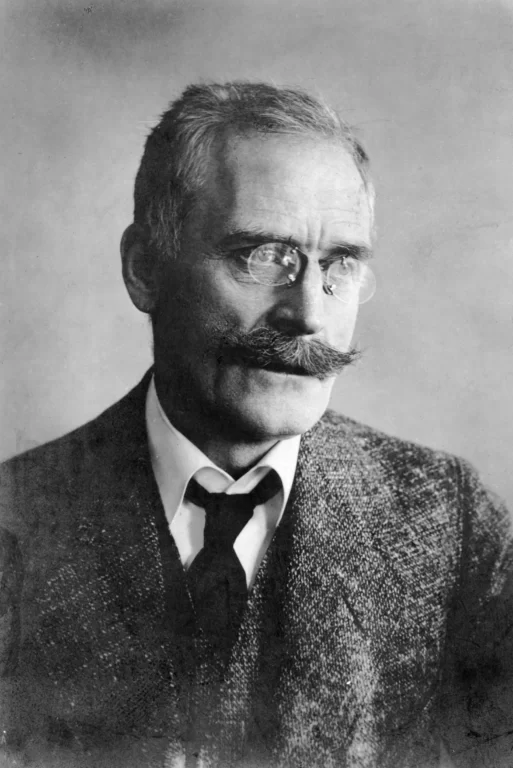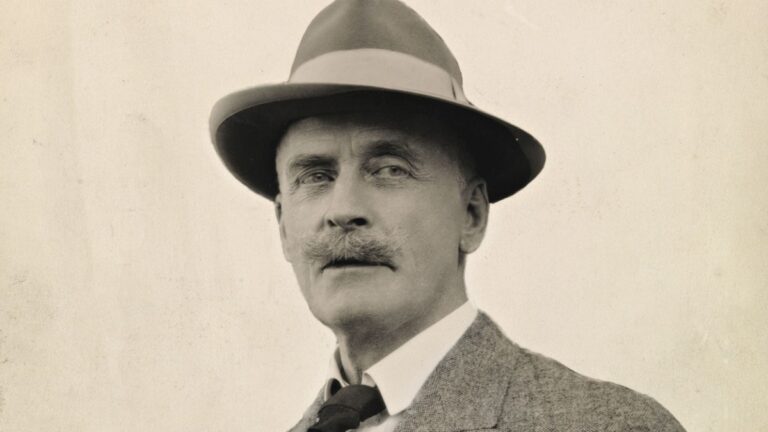Literary genius or traitor to his country? Knut Hamsun was a bit of both. This is the story of the controversial Nobel Prize winning Norwegian.
The legendary author from the picturesque town of Lom in the middle of the country left his mark not only on Norway, but on 20th century literature as a whole.

His literary prowess would earn him a Nobel Prize in 1920, but his political leanings would leave his reputation tarnished forever.
Learn about the man, his works and his unfortunate admiration of nazi Germany as we attempt to piece together the life of this complex character.
Knut Hamsun's early years
Knut Hamsun was born Knud Pedersen in 1859 in the small town of Lom, Gudbrandsdalen. He was the fourth of seven children, and when he was three, his family moved to far away Hamarøy, Nordland, to farm a relative's land.
The move happened because the family was poor, and for the same reason, Knut left his parents at the age of nine to help his uncle run a post office. The uncle was not kind to little Knut, and the author would later say that the beatings and starvings he was subjected to were the cause of his nervous problems.
After six years, he escaped back to Lom, where he occupied various odd jobs for a couple of years. He began writing shortly after that. He would continue working various jobs in both Norway and the United States, where he was a tram driver in Chicago.
Hunger: Hamsun's first great success
Hamsun's first novel to be met by wide acclaim would be his third: Sult (Hunger). The quasi-biographical novel recounts the story of an unnamed protagonist who wanders the streets of Oslo (then called Kristiania).

The character is an unsuccessful writer, whose only jobs he gets from the occasional kindly newspaper editor. The reader follows him as he wanders around the city, poor, hungry and increasingly hysterical.
One of the reasons Hunger had such a profound effect on literature is because of its innovative style. Hamsun wrote in a stream-of-consciousness style that was unusual for the time, and this helped to give the novel a sense of immediacy and authenticity.
The reader is able to get inside the mind of the main character and experience his thoughts and feelings in a very direct way. Many writers, including Jean-Paul Sartre and Ernest Hemingway, were inspired by Hamsun's work and borrowed elements of his style and themes in their own writing.
Paradoxically, this book about a destitute protagonist would pull Hamsun out of his financial troubles for good.
Mysteries: Challenging society's little rules
Hamsun's second book of note was published just two years later. Titled Mysterier (Mysteries), it follows a young man who arrives in a Norwegian coastal town and defies social conventions in a number of ways.
The plot centres around a young man called Nagel, and his love for a woman named Ylajali, who is described as a “mystery” throughout the novel. He is deeply in love with her, but she remains distant and elusive.
Rather than trying to win her over through traditional means, such as wooing her or showering her with gifts, Nagel instead focuses on trying to understand her and get closer to her on a deeper level. Meanwhile, his disregard for the conventions of small town Norway are not well-received by the other townspeople.

People disapprove of his unconventional appearance, of the fact that he’s a writer instead of having a more down-to-earth occupation, and of his habit of challenging authority. The novel deals with issues of love, identity and the search for meaning in a confusing and often alienating world. Such universal themes make it still very relevant today.
Pan: Love and jealousy
Knut Hamsun’s third major novel is titled Pan. It follows the life of a socially awkward young man named Glahn, who is a recluse living in the wilderness of Norway. He becomes romantically involved with a woman named Edvarda, who is engaged to another man.
As their relationship develops, Glahn becomes increasingly possessive and jealous. The novel is told from the perspective of Glahn, the protagonist, and is written in the first person, which gives the reader access to his deepest thoughts and emotions. Spoiler: Like many of Hamsun’s novels, it does not end well.
Victoria: A tale of impossible love
Victoria was published in 1898. It tells the story of a young woman named Victoria who leaves her home in the countryside to pursue her dreams of becoming an actress in the city.
Orbiting around her is Johannes, in love with her from a young age. The two are entangled throughout their lives, but obstacles always seem to be in the way of a fully fledged relationship between them.
The novel explores themes of love, desire, and the role of women in society. Hamsun includes vivid and detailed descriptions of the natural world, as well as its psychological depth and insight into the thoughts and emotions of his characters.

Victoria was a critical and commercial success when it was published, and it remains an important work in Norwegian literature. It is considered one of Hamsun's best-known and most enduring works.
Nobel Prize in literature
The list above gives just a few examples of Knut Hamsun’s literary works, but they are considered to be the best and most influential. For these works and others, Hamsun was rewarded with a Nobel Prize in literature in 1920.
This cemented his legacy and place in the pantheon of Norwegian culture. But the celebrated author would spoil his own reputation by being a vocal supporter of foreign forces invading his homeland.
Knut Hamsun’s support of nazi Germany
Knut Hamsun irrevocably tarnished his legacy by being such an ardent supporter of nazi Germany. He was resolutely anti-English and a known anti-Semite.
He was also a vocal critic of capitalism, industrialism and democracy, preferring instead a kind of feudal system he deemed more “natural”. During the Second World War, even as his home country was being occupied by nazi Germany, he praised the efforts of the invaders.
He courted and met with many high-ranking nazi officers, including Adolf Hitler and Joseph Goebbels. He was so impressed with Goebbels that he gave him his Nobel Prize medal.
Read more: Norway’s Traitor: The Story of Vidkun Quisling
Even at the very end, when Hitler killed himself in his bunker in 1945, Hamsun published a glowing obituary praising the man.
After the war, he was detained by the police for treason and committed to a hospital in Grimstad “due to his advanced age” (he was 85 at the time). He was tried and fined for his treasonous behaviour, and eventually condemned to pay a fine of 325,000 Norwegian kroner (about 7.5 million kroner or $770,000 in today’s money).
Hamsun’s legacy never recovered from his nazi convictions. Today, Norwegian literature circles are acutely aware of the man’s background, even while recognising his impact on world literature.
Visiting the Hamsun Centre
Fascist ideology aside, Knut Hamsun had an undeniable impact on literature, and you can learn more about his life and works, including the controversial bits, by visiting the Hamsun Centre.
This museum presents the works of the author and puts them in context, through quotes, pictures and clever use of the natural surroundings.
It is located in Hamarøy, between Bodø and Narvik. It is best accessed by car, but you can also reach it by taking the train from Trondheim to Fauske and then catching a bus for the remainder of the journey.


Where does it say that Hemingway was influenced by Hamsun? I have read a lot of the biographical information on both authors and have never com a cross this statement.